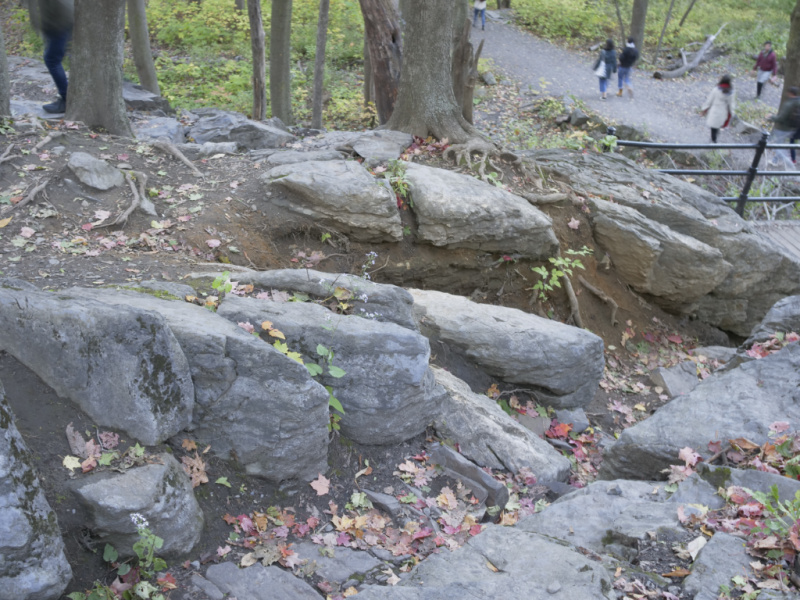The earliest forms of life on Earth date back approximately 4 billion years. In an attempt to uncover the events leading to the development of life, scientists study sedimentary rocks and the fossils contained within them to uncover and map the history of living organisms through the ages. In Montreal, evidence of this complex history is present in the stones used to construct some of McGill’s most famous buildings. These buildings preserve evidence of fossilized creatures, some of which are over 250 million years old.
On Sept. 26, McGill’s Redpath Museum hosted a guided online walking tour of building stones and fossils led by Ingrid Birker, Public Program and Education Co-ordinator at the Redpath Museum, and Meghomita Das, Ph.D. candidate in the Department of Earth and Planetary Sciences. The virtual tour began at the Redpath steps and took the audience around McGill’s downtown campus and the surrounding area, discussing various fossils and the geological periods in which they were formed.
Das presented the audience with images of various stones containing fossils. As she pointed out, Trenton limestone, one of the materials used in the construction of the Redpath Museum and other buildings in downtown Montreal and across Canada, contains shells from a group of invertebrates called Brachiopods.
“Trenton limestone is very commonly used for building purposes and is about 470 million years old,” Das said.
Next, the tour moved to the geological rock garden situated right outside the museum’s steps. Ammonite, an invertebrate fossil that dates from the Jurassic period 200 million years ago was one of the many displays in the garden. The modern-day relatives of this fossil are cephalopods like squids and octopi.
Heading down McTavish Street to the McGill Faculty Club, Das explained the geological history of the materials used to make the building.
“[The Club] has red clay bricks, which were left to dry in the sun, and some cat from 100 years ago decided to walk on it and left behind its paw prints,” Das said.
Though the clay bricks that compose the building’s facade are synthetically produced, Das pointed out that, under close observation, some naturally formed fossils are still apparent.
“Blemishes that stand out enable differentiation of fossils from normal rocks,” Das said in an email to The McGill Tribune. “The purpose of this tour was to guide people and show them how the intricate patterns and shapes of fossils give an account of their history.”
Demonstrating this idea, Das showed the spirals of a sea snail present along the sidewalks of the Mount Royal Club.
Holt Renfrew on de la Montagne Street, the next stop on the virtual tour, provided another example of captivating patterns.
“Looking closely at the sidewalls, tiny broken calcite discs can be seen, which belong to crinoids, also known as sea lilies,” Das said. “[The] closest Crinoids today are urchins and sea cucumbers.”
Moving on to the Le Chateau Apartments on Sherbrooke Street, Das expressed her excitement for the location’s many potential fossil hiding spots.
“This [is] my favourite fossil hunting spot,” Das said. “Every wall has a different kind of fossil, namely gastropods, corals, cephalopods, all from different time periods.”
Das also pointed out the brown patches on the wall, which were burrows made by animals that eventually became fossilized.
The tour concluded at the Peter Lyall House, which was built using 260-million-year-old sandstone brought to Canada from Scotland in 1889. Though the stones of the Peter Lyall House do not have fossils, Das explained that the building has other geological features that make it significant to scientists.
“It has an interesting weathering pattern like an onion peel,” Das said.“This pattern is often developed due to continuous freeze thaw cycling action.”
In closing, Das provided her own expert advice for amateur fossil hunters.
“For anyone [interested in] fossil finding: If you do find one, take a picture, if [that’s] possible.” Das said. “Identify the shape and use guides online, which sometimes help you load images, thereby identifying what fossil it is.”










Superbly articulated. Very well written